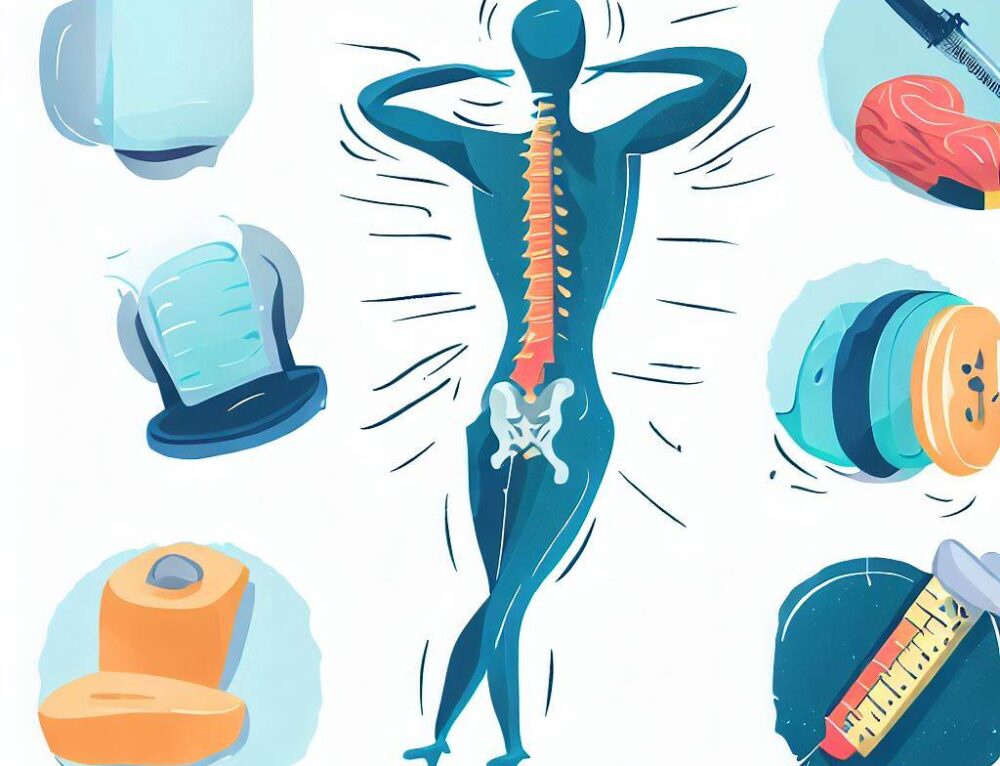What Is the Best Pain Medication for Scoliosis: Scoliosis is a condition characterized by an abnormal curvature of the spine, which can lead to pain and discomfort. Managing scoliosis-related pain is crucial for improving the quality of life for individuals with this condition. Pain medications are often prescribed to alleviate the symptoms associated with scoliosis. However, choosing the best pain medication for scoliosis requires careful consideration of various factors, including the severity of the pain, potential side effects, and individual patient preferences.

Understanding scoliosis and its impact on pain
Scoliosis can cause pain due to the abnormal curvature of the spine, which can put pressure on the surrounding muscles, nerves, and ligaments. The severity of pain can vary depending on the degree of curvature and the individual’s tolerance. In some cases, scoliosis-related pain can be debilitating, affecting daily activities and overall well-being.

Common pain medications for scoliosis
There are several types of pain medications commonly used to manage scoliosis-related pain. These include nonsteroidal anti-inflammatory drugs (NSAIDs), muscle relaxants, opioids, topical pain relievers, antidepressants, and anticonvulsants. Each medication has its own benefits and considerations, and the choice of medication depends on the individual’s specific needs and preferences.
Nonsteroidal anti-inflammatory drugs (NSAIDs) for scoliosis pain
What Is the Best Pain Medication for Scoliosis: NSAIDs are commonly used to relieve pain and reduce inflammation associated with scoliosis. Medications such as ibuprofen and naproxen sodium can help alleviate mild to moderate pain. However, long-term use of NSAIDs may have side effects, including gastrointestinal issues and increased risk of cardiovascular events. It is important to consult with a healthcare professional before using NSAIDs for scoliosis pain management.

Muscle relaxants for scoliosis-related pain
Muscle relaxants can be prescribed to relieve muscle spasms and reduce pain associated with scoliosis. These medications work by relaxing the muscles and reducing tension. Common muscle relaxants include cyclobenzaprine and baclofen. However, muscle relaxants may cause drowsiness and dizziness, so caution should be exercised when operating machinery or driving.
Opioids as a pain management option for scoliosis
In severe cases of scoliosis-related pain, opioids may be prescribed for short-term pain relief. Opioids, such as oxycodone and hydrocodone, work by binding to opioid receptors in the brain, reducing the perception of pain. However, opioids carry a risk of dependence and addiction, and their long-term use should be carefully monitored by a healthcare professional.
Topical pain relievers for scoliosis-related discomfort
Topical pain relievers, such as creams, gels, or patches, can provide localized relief for scoliosis-related discomfort. These products often contain ingredients like menthol or capsaicin, which can help numb the area and reduce pain. Topical pain relievers are generally considered safe and can be used in conjunction with other pain medications.
Antidepressants and anticonvulsants for scoliosis pain
Antidepressants and anticonvulsants are sometimes prescribed for scoliosis-related pain, particularly when there is a neuropathic component. Medications such as amitriptyline and gabapentin can help alleviate nerve-related pain. These medications work by altering the brain’s perception of pain signals. However, they may have side effects such as drowsiness, dizziness, and weight gain.
Physical therapy and exercise for managing scoliosis pain
In addition to medication, physical therapy and exercise can play a crucial role in managing scoliosis-related pain. Physical therapy can help improve posture, strengthen muscles, and increase flexibility, which can alleviate pain and discomfort. Exercise programs tailored to the individual’s needs can also help improve overall spinal health and reduce pain.
Complementary and alternative medicine approaches for scoliosis pain
Complementary and alternative medicine (CAM) approaches, such as acupuncture, chiropractic care, and massage therapy, can be considered as adjuncts to traditional pain management strategies for scoliosis. These therapies aim to reduce pain and improve overall well-being. While some individuals may find relief through CAM approaches, it is important to consult with a healthcare professional and ensure the practitioner is qualified and experienced in treating scoliosis.
Considerations for choosing the best pain medication for scoliosis
When choosing the best pain medication for scoliosis, several factors should be considered. These include the severity of pain, potential side effects, individual preferences, and the overall treatment plan. It is important to work closely with a healthcare professional to determine the most appropriate medication and dosage for managing scoliosis-related pain.
Conclusion: Finding the right pain management strategy for scoliosis
Managing scoliosis-related pain requires a comprehensive approach that considers various factors, including medication, physical therapy, and complementary therapies. The choice of pain medication depends on the individual’s specific needs and preferences, as well as the severity of pain. It is important to work closely with a healthcare professional to develop a personalized pain management strategy that provides optimal relief while minimizing potential side effects. By addressing scoliosis-related pain effectively, individuals can improve their quality of life and maintain overall spinal health.
参考文献
- 国立関節炎・筋骨格系・皮膚疾患研究所。"脊柱側湾症".NIH.NIH: https://www.niams.nih.gov/health-topics/scoliosis
- Mayo Clinic. “Scoliosis: Symptoms and Causes.” Mayo Clinic. Available at: https://www.mayoclinic.org/diseases-conditions/scoliosis/symptoms-causes/syc-20350971
- American Academy of Orthopaedic Surgeons. “Scoliosis: Symptoms, Causes, and Diagnosis.” AAOS. Available at: https://orthoinfo.aaos.org/en/diseases–conditions/scoliosis/
- Spine-Health. “Pain Medications for Scoliosis: An Overview.” Spine-Health. Available at: https://www.spine-health.com/treatment/pain-management/pain-medications-scoliosis
- Cleveland Clinic. “Managing Pain for Scoliosis: Medications and Therapies.” Cleveland Clinic. Available at: https://my.clevelandclinic.org/health/treatments/15251-pain-management
- Johns Hopkins Medicine. “Pain Management for Scoliosis: A Comprehensive Guide.” Johns Hopkins Medicine. Available at: https://www.hopkinsmedicine.org/health/conditions-and-diseases/scoliosis
- National Pain Report. “Best Medications for Scoliosis Pain Relief.” National Pain Report. Available at: https://nationalpainreport.com/best-medications-for-scoliosis-pain-relief/
- Drugs.com. “Cyclobenzaprine: Uses, Dosage, Side Effects, and More.” Drugs.com. Available at: https://www.drugs.com/cyclobenzaprine.html
- Drugs.com. “Baclofen: Uses, Dosage, Side Effects, and More.” Drugs.com. Available at: https://www.drugs.com/baclofen.html
- MedlinePlus. “Opioids: What They Are and How They Work.” MedlinePlus. Available at: https://medlineplus.gov/opioids.html

